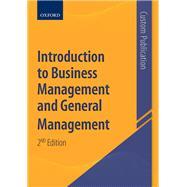Question
Case Discussion 28: The Walrus and the Carpenter1 The Walrus and the Carpenter (W&C) is an oyster bar in Seattle, Washington. Before April 2015, the
Case Discussion 28: The Walrus and the Carpenter1 The Walrus and the Carpenter (W&C) is an oyster bar in Seattle, Washington. Before April 2015, the restaurant faced a challenge. The wait staff was paid the Washington State minimum wage (which exceeded the federal minimum wage and, at $9.32, was the highest state minimum wage in the United States at the time). This created both high labor costs for the restaurant and also an excessively large gap in compensation (i.e., wage plus bonus) between wait staff and kitchen staff, because the wait staff gets tips and the kitchen staff does not. The massive pay gap created morale problems among the kitchen workers, and it existed because state law required that wait staff be paid the state minimum wage no matter how high their compensation was after including tips. If it were not for that law, W&C could have lowered the hourly wage of wait staff (potentially all the way down to zero, because tip income is so high that even at an hourly wage of zero the wait staff would make more compensation than the state minimum wage, as required by law) and used the savings in compensation costs to pay more to the kitchen staff. But state law prohibited such rebalancing, which created two problems for W&C: (1) excessive labor costs, because wait staff was overpaid in the sense that (in the absence of the law) W&C could have easily hired wait staff willing to work at lower pay levels than what W&C was forced to pay currently, and (2) the articially high pay for the wait staff created morale problems for the kitchen staff. In April 2015, W&Cs problem got even worse when Seattles new minimum wage ordinance went into effect, raising the minimum wage even higher than the Washington minimum and setting it on a path to reach $15 within several years. April 2015 marked the rst phase of the increase. Schedule 2 employers (i.e., those with 500 or fewer workers) such as W&C had to pay a minimum wage of $10, rising each year until hitting $15 in 2021. They also had to pay a minimum compensation (not to be confused with wage) of $11, rising each year until hitting $15 in 2019. This means that at W&C, in 2015, kitchen staff needed to be paid a wage of at least $11 per hour (because their compensation consists only of wages) whereas wait staff had to be paid a wage of at least $10 per hour (because tips would bring them up to, and indeed far beyond, the required $11 in compensation). W&C responded to the law by immediately raising the price of all menu items by 18% (i.e., adding an automatic 18% gratuity) and eliminating tips (i.e., customers were told that the tips were built into the price). The extra revenue from the price hike was used to nance higher wages for all workers (both kitchen staff and wait staff) and to shrink the gap in pay between kitchen staff and wait staff. But that wasnt enough to cover the added labor costs from the minimum-wage ordinance, so W&C increased the automatic charge on menu items from 18% to 20% and also shrank the owners share of prot. W&C also made a series of adjustments to rebalance the pay (giving wait staff less and the kitchen staff more) to achieve greater equality and getting the restaurant staff on board through open-book management, i.e., by showing everyone the payroll spreadsheets so that they could see how the money was being allocated.
Questions
6. Do you think W&Cs policy changes are the best approach for dealing with the Seattle minimum-wage ordinance? What other strategies might W&C have considered, and what are their advantages and disadvantages compared to the path chosen? (a) If you were a direct local competitor of W&C, what strategy would you have taken?
7. The rst paragraph of the case says that, were it not for the law, W&C could lower the wages of the wait staff, potentially all the way down to zero. But why stop at zero? In the absence of regulation, could the hourly wage ever be negative? Explain what that would mean and whether it would ever happen and make sense, in this production setting or others.
Step by Step Solution
There are 3 Steps involved in it
Step: 1

Get Instant Access to Expert-Tailored Solutions
See step-by-step solutions with expert insights and AI powered tools for academic success
Step: 2

Step: 3

Ace Your Homework with AI
Get the answers you need in no time with our AI-driven, step-by-step assistance
Get Started


